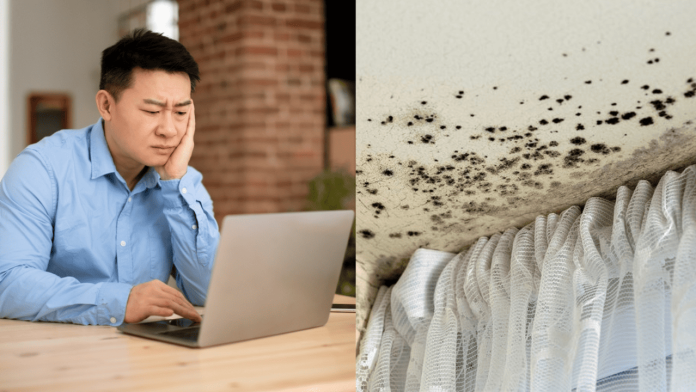Rent Reminders Are Swift, But Repairs Drag On in Betoota Heights
In the heart of Betoota Heights, a group of renters is discovering a common truth about renting: speedy rent reminders don’t equal speedy repairs. For Leah, Manisha, and Gwen, the reality of share house living includes broken fittings, cold interiors, and silence from their rental agent when it matters most.
Like many under-30s navigating Australia’s brutal housing market, these three young women reside in a cold, overpriced terrace home. The house is far from livable standards, but complaining about it feels risky. Leah, often referred to as the “mum” of the house, explains that they waited until after a rent hike to even bring up the much-needed repairs.
“The back door’s broken and can’t close properly, there are no working lights in the kitchen and Manisha’s room is filled with mould after all the rain,” Leah says. “And a few other issues but we don’t want to ask for too much, you know?” The fear that maintenance requests could spark another rent increase looms large.
Fear of Retaliation Keeps Renters Silent
This kind of rental housing anxiety isn’t uncommon. Tenants are cautious not to “rock the boat,” fearing landlords may retaliate with another price jump or, worse, eviction. But what’s even more frustrating is the discrepancy in communication. While agents are quick to remind tenants about due rent or new lease signings, repair requests seem to fall into a bottomless inbox.
“It’s funny hey,” Leah adds. “The agent is quick to reply if we have to sign on to a new lease or if we have to pay a water bill.” But when it comes to fixing safety issues like mold or non-functional doors, responses take weeks—if they come at all.
In Leah’s experience, even one maintenance request took nearly a month to resolve. She notes that by the time the issue was finally addressed, something else had already broken. It’s a frustrating cycle familiar to many renters across the country.
A Broken System That Fails Young Renters
The pattern of neglect speaks to a larger issue in Australia’s rental market. Agents often prioritize financial transactions over tenant well-being, especially in houses already suffering from years of wear and lack of investment. Many renters find themselves navigating unhealthy living conditions, with very little support from property managers.
For renters like Leah, Manisha, and Gwen, this isn’t just an inconvenience—it’s a matter of basic safety and dignity. In winter, a house with no working kitchen lights and a broken back door is more than uncomfortable—it’s a health risk. The mold in Manisha’s room, intensified by weeks of rainfall, is a clear hazard that continues to go unaddressed.
Meanwhile, the rental agent’s urgency re-emerges when money is involved. Tenants are chased immediately for late rent, with automated emails and text reminders often arriving within hours. But when a tenant reports mold or a faulty door lock, that urgency suddenly disappears.
Calls Grow for Stronger Renter Protections
This unbalanced priority highlights a need for stronger rental protections and a cultural shift in how we value tenant comfort versus landlord profits. Renters shouldn’t have to choose between safe living conditions and affordable rent. The system, as it stands, places the burden entirely on tenants.
For many Australians, this story is painfully familiar. Property managers and landlords, backed by weak enforcement of maintenance standards, create environments where young renters endure silent neglect. It’s not just about broken doors—it’s about broken trust in a housing system that feels increasingly one-sided.






